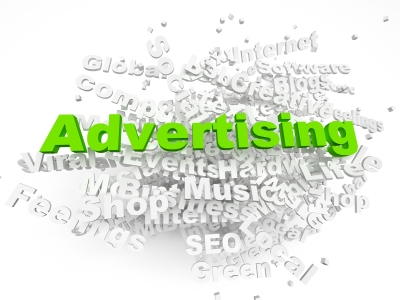Entries Tagged 'Advertising' ↓
July 29th, 2015 — Advertising, Branding, marketing
A tagline has always been seen as an important part of your brand’s marketing, regardless of your company’s size.
In a few short well-chosen words, it sums up your brand’s promise, but is it still relevant today?
Just look at some of the biggest companies around like Amazon, Apple, eBay and Google, they don’t rely on taglines, their logo is enough to instil the values they hold dear.
OK, the chances of your business commanding the same kudos in your industry is unlikely (you don’t have their marketing budget for a start), but if they can go tagline-less can you?
More and more companies are moving away from them, but is that because the vast majority of taglines are, well, not to put too finer point on it, bad?
Is there a value in taglines?
Look at is this way, advertising is moving away from selling. Overt sales pitches don’t cut it any more (did they ever?). Consumers want to be wooed; they want to be shown how great their life will become if they buy your product. In other words, your marketing has to be all about them and not about you.
The inclusion of a tagline however, creates a hook that attaches itself to their mind permanently telling them:
- I’m lovin’ it – McDonalds
- Just do it – Nike
- We’re better connected – 02
- Every little helps – Tesco
- It gives you wings – Red Bull
- The make-up of make-up artists – Max Factor
- 8 out of 10 cats prefer it – Whiskas
A good tagline can permanently cement itself from childhood, who doesn’t remember the Frosties, They’re Grrrrrrreat!
It instantly conveys what your brand stands for and your customers’ attitude towards it.
How to create a winning tagline
Only time will tell if you’ve come up with a cracker, but here are a few tips to try and get you on the right course.
- Do you want it to reflect your values or your product/service?
- Does it reflect the emotions and feelings of your customers?
- Does it gel with your businesses ideology?
- Use simple language without any jargon
- Will it date quickly or does it have longevity?
- Is it memorable?
Ultimately, ask yourself whether it adds value to your brand?
If you’re really struggling to come up with something perhaps it’s worth going to market without one.
In time, as your business grows and you understand it better (and your customers), you can always do a mini rebrand exercise and introduce one.
August 20th, 2014 — Advertising, Branding

You’ve already seen the power of search marketing.
It’s not a coincidence that the dresses you’ve been looking at or the bike you’ve been drooling over constantly appear in on screen adverts and all over Facebook. For a while now Google et al have been watching what you’ve been looking at, reading your profiles and matching subtle advertising with the stuff you love.
Whether you think that’s great or a bit creepy, it looks as though it’s a trend that’s set to continue.
A recent article about Tumblr in The Drum caught my eye.
Apparently, Tumblr is signing a deal with Ditto Labs. If you’ve not heard of them, they’re a firm that analyses photos on social media to look for brand related data. Anything from someone holding a bottle of soft drink to a picture of you wearing a branded jumper.
So what?
Well the deal will give advertisers the opportunity to see what their fans are saying about them and to get an insight into how they are perceived.
Is this going to be yet another way companies get to bombard us with random adverts for their stuff, or just an innocent exercise in understanding their customers in an attempt to improve their brand?
According to Tumblr, this partnership doesn’t mean you will be targeted based on what you’re wearing or holding in your Tublr photos…at the moment.
My own opinion is divided on this particular issue.
On the one hand, it’s useful to only get ads that are relevant to me, but it gets annoying when the item I’ve just bought keeps popping up.
What do you think of all this?
Is it a good thing that anonymous companies have such power over us?
OK, at the moment it’s the subtle placement of (potentially) relevant ads, but where does it stop?
Leave a comment below and let me know your thoughts.
February 10th, 2014 — Advertising, advertising copywriting, marketing, Sales Letters

Let me give you a clue.
“The number of ideas to use in an ad should be odd – and three’s too many”
Timo Everi, Hasan & Partners Helsinki
I couldn’t put it better myself.
The key to any form of marketing is clarity (of course it also has to be persuasive, but for the purpose of this post, clarity wins through).
If you want your reader to be 100% clear about what you’re telling them you can’t bombard them with umpteen messages at once.
A classic example of this is a sales letter.
Years ago, a client wanted a sales letter. We agreed terms and I got to work. After a while he had a brain wave; by getting me to include 2 products within one letter, he would only have to pay me once to sell twice as much.
Wrong.
Trying to squeeze two ideas into one letter merely dilutes its effectiveness. To have any sort of effect you must concentrate on one idea and exploit it to the max.
Maintaining the focus of the reader is essential. If you present them with one idea, they can follow your reasoning and benefits. But if you start telling them one thing and then add “…we also offer…” they’re suddenly all at sea.
Powerful copy focuses on just one idea:
- It shows the reader how they will benefit from that one idea
- They’ll understand how their life will be enriched by that one idea
- They’ll be left with no other choice than to buy into your idea
What at first might seem a financially driven ‘smart’ move will only end up with disappointing results.
Regardless of what piece of marketing you’re creating:
- Stick to one idea
- Focus your message on your reader
- Show how they will benefit
- Tell them how to buy
Author: Sally Ormond
January 24th, 2014 — Advertising, Friendvertising
What is friendvertising?
Well, have you noticed how corporations have changed the way they sell to us?
Sure, you still get the TV commercials and magazine or newspaper adverts, but there’s a more subversive form of advertising that’s taking over.
Before I go on, let me ask you something. When was the last time you saw an image or video that you loved so much you shared it with your friends on social media?
Was it produced by a corporation?
If it was, you’ve been friendvertising without even knowing it.
Friendvertising is how you become an unwitting advocate for a brand. You see companies have finally gotten wise to the fact that you trust your friends far more than you trust them. If the company tells you their product is perfect for you, you’ll probably shrug it off, but if your friends tell you about a great product they’ve found, you’re more likely to go out and buy it.
I must admit that the first time I came across the term friendvertising was after reading this article in the Guardian.
One of the examples they cite is the most shared ad of 2013, Dove’s Real Beauty Sketches.
I’d not seen it before, but I have to say it made me tear up. It’s an incredibly emotional narrative that made me feel compelled to share it with others. Why? Because it looks at a subject that affects everyone (not just women); everyone can relate to it and everyone knows someone they’d want to share it with.
Clever or exploitative?
Are large corporations using you?
Yes.
How do you feel about that?
Only you can answer that.
Social media and especially Facebook have opened up your ‘friendship channels’ to marketers. I guess you can call is the 21st century version of ‘word of mouth’; it’s just that the actual advert is far more subversive than the good old days.
What are your thoughts on friendvertising? Leave a comment below, I’d love to hear what you think.
Author: Sally Ormond
October 30th, 2013 — Advertising, advertising copywriting
It’s everywhere. 
From the moment you open your eyes in the morning you are subjected to a barrage of advertising. Whether it’s on the radio, in newspapers, on billboards, on the Tube, bus or train…everywhere you go, it’s staring you in the face.
But are you taking any notice of it?
Have a think about yesterday – how many adverts do you remember seeing?
I’m willing to bet not that many.
That’s quite worrying if you’re in the advertising industry.
In Dave Trott’s book ‘Predatory Thinking – A Masterclass in Out-thinking the Competition’ (well worth a read by the way), he stated that out of an annual £18.3 billion spend (that’s on all forms of advertising):
- 89% of advertising isn’t noticed or remembered
- 4% is remembered positively
- 7% is remembered negatively
So that means UK businesses are wasting £17.3 billion. That’s got to hurt.
But advertising isn’t about producing something clever. Granted it needs to get you noticed (even if it as one of the 7%), but more than that, it needs to make people want to buy.
There’s a lot of talk these days about using advertising to raise brand awareness. That’s just a way for advertising agencies to produce ads that aren’t measureable.
According to Wikipedia, advertising is:
“…a form of communication for marketing…used to encourage, persuade, or manipulate an audience…to continue or take some new action.”
To my mind that means buying.
Your advertisement, in whatever form it takes, has to sell, otherwise what’s the point?
So when planning your next advertisement project think about your customers and what will make them buy – I’m pretty sure it’s not a flash ad that doesn’t tell them anything (O2’s ‘Be more dog’ springs to mind).
- What do they want?
- Why do they need it?
- What will it mean to them when they have it?
Answer those questions and you’ll be on your way to a raft of new customers.
What do you reckon?
What’s your take on this?
Is advertising too much about agencies touting for awards? Has the whole concept of advertising (i.e. to sell) been lost?
When was the last time you were sold to by an advert? What made it stand out for you?
Leave a comment below as this is a subject that needs a good debate.
Image courtesy of David Castillo Dominici/FreeDigitalPhotos








